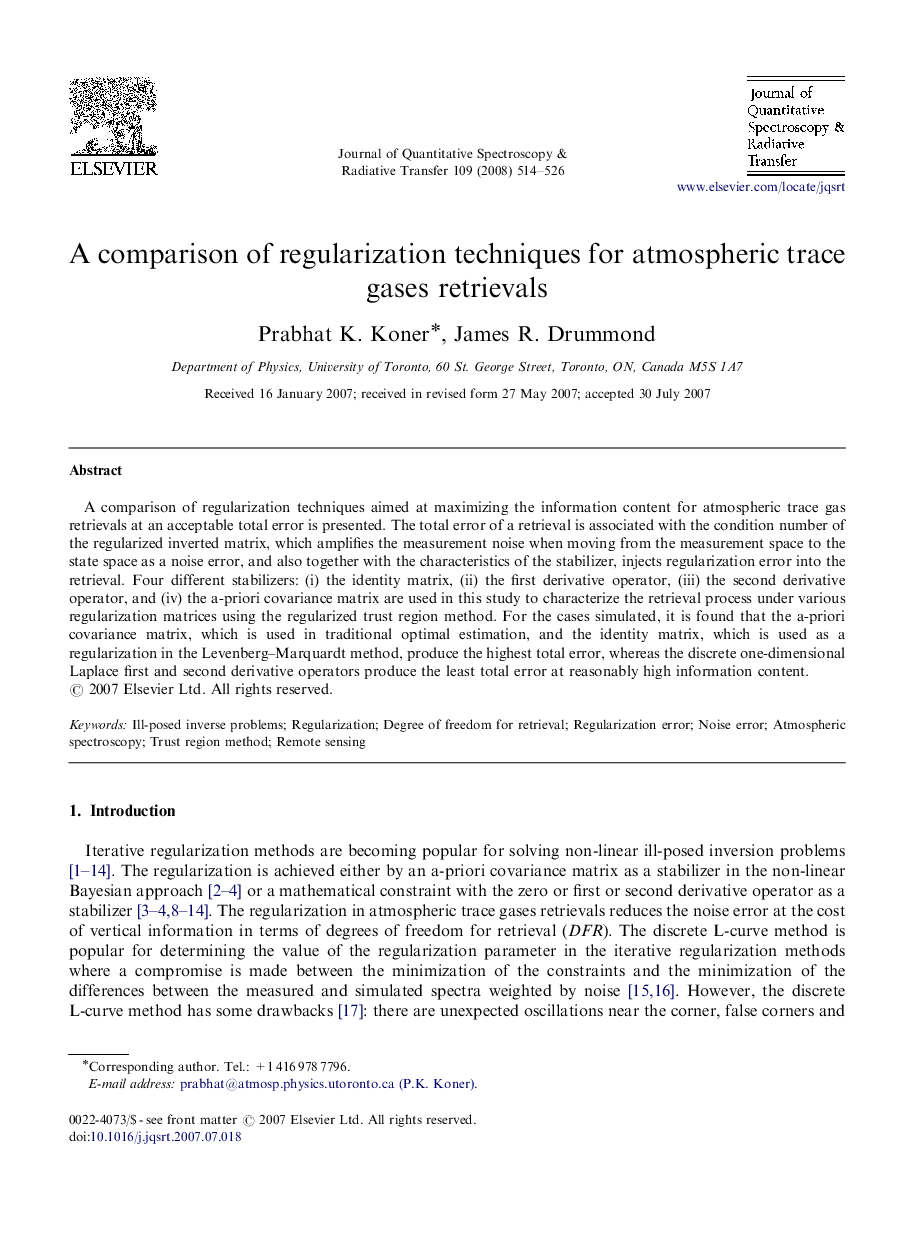| کد مقاله | کد نشریه | سال انتشار | مقاله انگلیسی | نسخه تمام متن |
|---|---|---|---|---|
| 5430694 | 1397414 | 2008 | 13 صفحه PDF | دانلود رایگان |

A comparison of regularization techniques aimed at maximizing the information content for atmospheric trace gas retrievals at an acceptable total error is presented. The total error of a retrieval is associated with the condition number of the regularized inverted matrix, which amplifies the measurement noise when moving from the measurement space to the state space as a noise error, and also together with the characteristics of the stabilizer, injects regularization error into the retrieval. Four different stabilizers: (i) the identity matrix, (ii) the first derivative operator, (iii) the second derivative operator, and (iv) the a-priori covariance matrix are used in this study to characterize the retrieval process under various regularization matrices using the regularized trust region method. For the cases simulated, it is found that the a-priori covariance matrix, which is used in traditional optimal estimation, and the identity matrix, which is used as a regularization in the Levenberg-Marquardt method, produce the highest total error, whereas the discrete one-dimensional Laplace first and second derivative operators produce the least total error at reasonably high information content.
Journal: Journal of Quantitative Spectroscopy and Radiative Transfer - Volume 109, Issue 3, February 2008, Pages 514-526